Matthias von Hein
09/25/2023
One year ago, a series of explosions destroyed a central element of Europe's energy infrastructure. It remains unclear who was responsible.
It was 2 a.m. on September 26, 2022, when seismic monitoring stations in Denmark, Sweden and Germany registered a weak earth tremor.
At the same time, workers at the pipeline operator Nord Stream registered a sharp drop in pressure in the 1,200-kilometer (745-mile) gas pipes that connect Russia and Germany. As the sun rose over the Baltic Sea, giant bubbles of methane gas could be seen from the air near the Danish island of Bornholm. They were coming to the surface from about 80 meters (260 feet) underwater. Further tremors followed. Soon it became clear: Several sections of the Nord Stream 1 and 2 pipelines had been blown up.
A key component of German and European energy infrastructure had been destroyed.
Investigations yield nothing substantial
It is here that the trail of officially confirmed findings runs cold. Instead, a vast realm of conjecture, speculation and suspicion has opened. Straight after the attack, many pointed the finger at Moscow. Ukrainian presidential adviser Mykhailo Podolyak wrote on Twitter, today known as X: "'Gas leak' from NS-1 is nothing more that [than] a terrorist attack planned by Russia and an act of aggression towards EU."
Reactions from officials were sharp: "Any deliberate disruption of active European energy infrastructure is unacceptable & will lead to the strongest possible response," European Commission President Ursula von der Leyen wrote on the same platform after meeting with Danish Prime Minister Mette Frederiksen following the attack.
A year after the undersea explosions, it has not yet been officially confirmed who was behind the attacks on the gas pipelines. Investigations are underway in Germany, Sweden and Denmark, but very little information has been made public. Increasingly, attention is turning toward what investigative journalists are publishing.
In March 2023, a German investigative team caused a stir when it published research pointing towards Ukraine. The 15-meter yacht "Andromeda" played a key role. According to the collaborative investigation by stations of the German public service broadcaster ARD and Die Zeit newspaper, five men and one woman set sail on the boat from the Baltic Sea port of Warnemünde, in Germany, on September 6, 2022, about three weeks before the pipeline attack. Investigators from the German Federal Police Office (BKA) were reported to have found traces of explosives on board the yacht — the same substance that had been detected on the bottom of the Baltic.
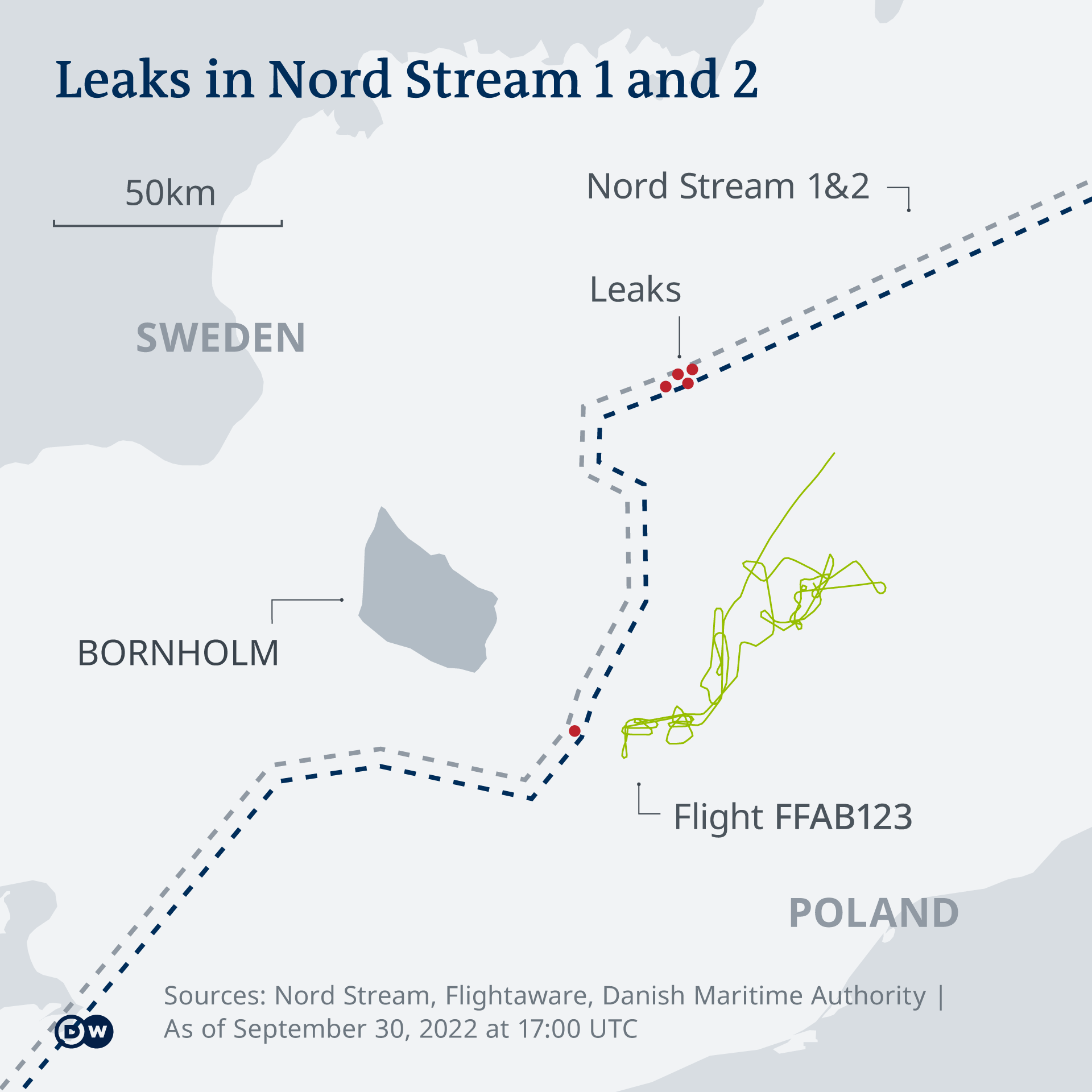
In early June, a report appeared in the Washington Post media outlet which supported this version of events. It claimed that European and American secret services had already been warned about plans for an attack by Ukrainian divers on the Nord Stream pipeline in June 2022. According to the Washington Post, the special operations forces reported directly to the commander-in-chief of the Ukrainian armed forces, General Valery Zaluzhny. Ukrainian President Volodymyr Zelenskyy, however, was not informed about the plans.
In late August, following an extensive investigation, a 20-person investigative team from German news magazine Spiegel and public broadcaster ZDF also concluded: "The clues point in one direction: toward Ukraine." Wolf-Wiedmann-Schmidt was one of the members of the team. The journalist told DW: "The investigators found nothing which could prove that Russia could be behind it, and even less which suggested that the US could be behind the attack. There is absolutely no evidence of that."
In February, a widely published report by acclaimed American journalist Seymour Hersh accused the US of initiating the explosion. Hersh had based his report on a single, anonymous source.
US threats against Nord Stream
In any case, Hersh could point to statements made by US President Joe Biden during his inaugural visit from German Chancellor Olaf Scholz in early February 2022, before Russia launched its all-out invasion of Ukraine. At that time, Biden said in front of the gathered press: "If Russia invades ... then there will no longer be Nord Stream 2. We will bring an end to it."
A few days after the attack, US Secretary of State Antony Blinken said that the Nord Stream explosions offered "a tremendous opportunity to once and for all remove the dependence on Russian energy."
The German-Russian energy partnership had been a thorn in the side of the US long before the war in Ukraine — as well as for Ukraine and other European countries. Washington had long sought to prevent the construction of Nord Stream 2, a pipeline that ran parallel to its predecessor and was completed in September 2021, and used sanctions to delay it considerably. The second pipeline was never put into use, as the German government blocked approval shortly before Russia's invasion of Ukraine.
Russian motives
Russia also had a motive to destroy the gas pipes: Because the Russian company Gazprom had already stopped the flow of gas through Nord Stream 1 in the summer of 2022 – and in doing so violated its contractually assured delivery obligations. That would have opened the door to recourse claims from its Western partners. The destruction of the pipeline allowed Gazprom to invoke "force majeure" — rendering the recourse claims invalid. This theory, however, assumes that Russia would abide by the rulings of international courts.
A war crime according to international law
According to international law, the attack on the Nord Stream pipeline would be an illegal act, even in the context of a military conflict, Bonn-based international law expert Stefan Talmon told DW. "That is because the Nord Stream pipeline is a civilian infrastructure project. According to the Rome Statute of the International Criminal Court, destroying civilian infrastructure is not only a violation of international law, but a war crime."
At least it would be if one of the two countries at war, Russia or Ukraine, could be proven to be behind the attack. If a third country had blown up the gas pipeline, the law professor explained, "that would not come within the framework of the law of armed conflict, instead it would ultimately be a terrorist attack." Talmon is critical of possible claims for compensation because of so-called state immunity: "Before a national court, Russia as well as Ukraine or a third country could invoke this state immunity, as it also applies for such unlawful attacks."
It remains to be seen whether the perpetrator will ever be identified, and if so, whether the case of the Nord Stream explosions will ever have its day in court. If a trial were to be held, Chancellor Olaf Scholz wants it to take place in Germany.
This article was originally written in German.
Researchers in Norway reveal further analysis of 2022 explosions as well as a detailed timeline of events
Miranda Bryant in Oslo
Tue 26 Sep 2023
Scientists investigating the attack on the Nord Stream pipelines have revealed key new details of explosions linked to the event, which remains unsolved on its first anniversary.
Researchers in Norway shared with the Guardian seismic evidence of the four explosions, becoming the first national body to publicly confirm the second two detonations, as well as revealing a detailed timeline of events.
The recently discovered additional explosions took place in an area north-east of the Danish Baltic island of Bornholm about seven seconds and 16 seconds after the two previously known detonations.
Using information from seismic stations in northern Europe and Germany, including the Swedish National Seismic Network and Danish stations on Bornholm, seismologists deployed advanced analysis techniques to observe and pinpoint the blasts.
Seismologists at Norsar, Norway’s national data centre for the comprehensive nuclear test ban treaty (CTBT), told the Guardian they had so far found a total of four explosions – one south-east of Bornholm and three north-east of the island.
Two clear seismic events, named Event S and Event N, were identified on 26 September 2022, soon after the attack. The first, on Nord Stream 2, occurred at 02:03:24 (UTC+2), and the second, on Nord Stream 1, at 19:03:50 (UTC+2).

Norsar said there could potentially be further explosions buried in the data.
The explosions made holes in both Nord Stream 1 pipelines and one of the Nord Stream 2 pipelines. By November last year, Swedish investigators had confirmed that the breaches were caused by man-made explosives.
Investigations are continuing, but officials quoted in the US and German press have said the evidence points towards a Ukrainian-backed group, or a pro-Ukrainian group operating without the knowledge of the leadership in Kyiv.
German investigators have focused on a 51ft rental yacht called the Andromeda, which was hired by a mysterious crew of five men and one woman, at least some of whom were travelling on false passports.
Der Spiegel, which recreated the Andromeda’s journey, quoted investigators as saying the evidence all pointed at Kyiv’s involvement. There is debate, however, over whether a small crew of divers operating from a pleasure yacht would have been capable of carrying out the difficult, deep and slow dives necessary to place the explosives.
A leaked US defence document, reported by the Washington Post, showed the CIA had been tipped off by an allied European agency in June 2022, three months before the attack, that six members of Ukraine’s special operations forces were going to rent a boat and use a submersible vehicle to dive to the seabed using oxygen and helium for breathing, in order to sabotage the pipeline. But the leaked US document said the planned operation had been put on hold.
Other reports in the Scandinavian media have pointed to a cluster of Russian ships, with their identifying transponders turned off, in the vicinity of the blast sites in the days before the explosions.
The Nord Stream pipelines are operated by two companies, Nord Stream AG and Nord Stream 2 AG, both majority-owned by the Russian state energy company Gazprom. Nord Stream 1 and 2 are both twin pipelines, and together they bring up to 110bn cubic metres of gas annually from Russia to Germany.
Nord Stream 1 went into operation in 2012. Nord Stream 2 was completed in September 2021 but has never transported any gas. From the outset it was mired in controversy in the face of adamant opposition from German allies, in particular the US and Poland, who both believed the Germans were making themselves and much of the rest of Europe hostage to Russian energy supplies.
The US made clear that bilateral relations would be badly affected if Nord Stream 2 went into operation. Once the full-scale invasion of Ukraine began, all talk of opening the pipeline was shelved.

The newly discovered events, named NB and NC, took place about seven seconds and 16 seconds after the event previously known as Event N, which they now refer to as NA.
Investigations by Denmark, Sweden and Germany are understood to be planned for publication in a joint study with Norsar. Authorities for all three countries declined to comment on the investigations.
In July, the UN security council heard investigators had found traces of undersea explosives in samples from a yacht, but that they were unable to reliably establish the identity or motives of those involved or whether it was the work of a specific country.
Using information from a number of seismic stations in northern Europe and Germany, including the Swedish National Seismic Network and the Danish stations on Bornholm, seismologists used advanced analysis techniques to observe the additional two explosions.
According to their calculations, the second and third explosions (NA and NB) were 220 metres apart from each other (with the third west of the second) and the fourth was several kilometres south-west of the second.

Andreas Köhler, a senior seismologist at Norsar, said the distance between NA and NB “fit very well with the distance between both pipelines of Nord Stream 1 at the westernmost gas plume location northeast of Bornholm.” Nord Stream 1 and Nord Stream 2 both have two pipelines each.
The location of the final explosion, however, is less clear because there are less station observations. “This best fits an explosion on the Nord Stream 1 pipeline, but we cannot exclude a location at Nord Stream 2,” said Kohler.
Analysis of the source mechanism from the signals showed they were generated by explosive devices.
Based in Kjeller, near Oslo, Norsar monitors events across the world including nuclear testing in North Korea, the impact of CO2 storage on the Norwegian continental shelf and conflict zones such as Ukraine.
It takes 10 minutes for shock waves to reach them after a nuclear test in North Korea, with location accuracy of 150-200 metres, leading to the claim that it is “10 minutes from Kjeller to North Korea”.
The war in Ukraine has marked a significant breakthrough for Norsar in terms of the potential use of seismology in conflict monitoring. “The technology that is used to find explosions the other side of the globe can also find explosions closer to home,” said its chief executive, Anne Strømmen Lycke.

\It started monitoring Ukraine for the Civil Radiation Authority due to concerns of radioactive landfall over Norway after the 1986 Chernobyl disaster. It monitors bombing around the power plant on a continuing basis and has been able to contribute evidence to the UN truth commission.
In June, its scientists were able to confirm the time and location of reports of two explosions at the Kakhovka dam using data from seismic stations in Romania and Ukraine.
“It’s amazing, the accuracy of the observation and the use of it. The UN truth commission for Ukraine has contacted us to ask us to verify some events, among them the Kakhovka dam, so they are interested in having these cold data as basis for their considerations.”
Norsar is also investigating whether its technology could be used in the future to monitor ceasefires.
“We know that we could see, based on frequency content and signal difference, between different helicopter types and likely also different weaponry types,” Strømmen Lycke said.
“And that could be something to verify and then you could actually monitor and trace after unravelling who did what. I suppose that is why the UN truth commission is interested in these things.”

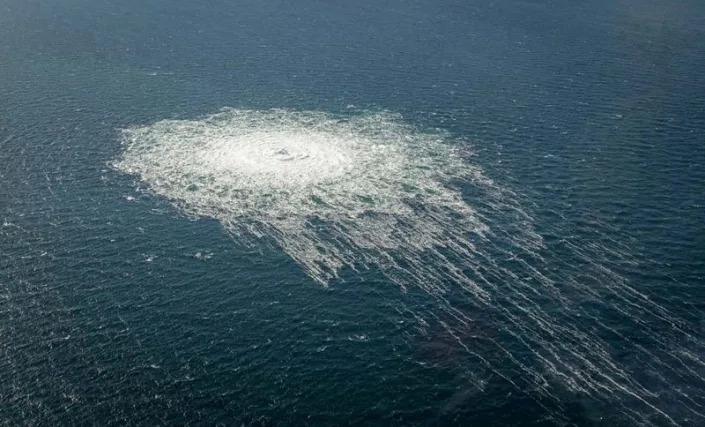
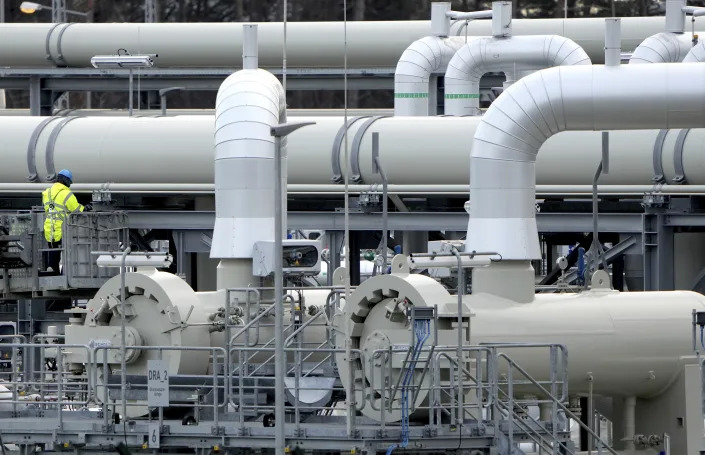
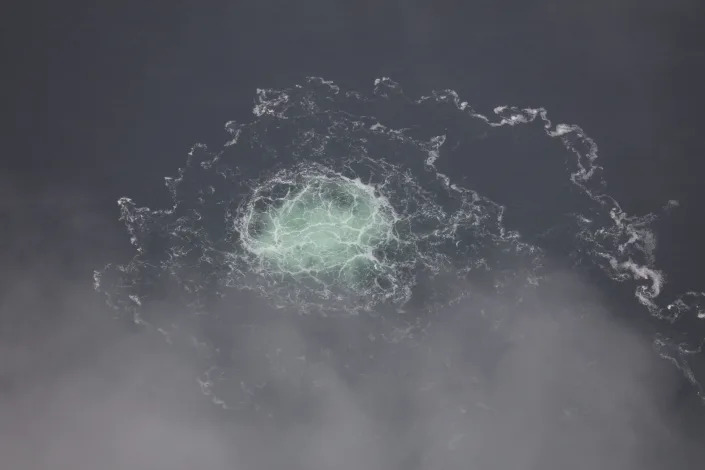

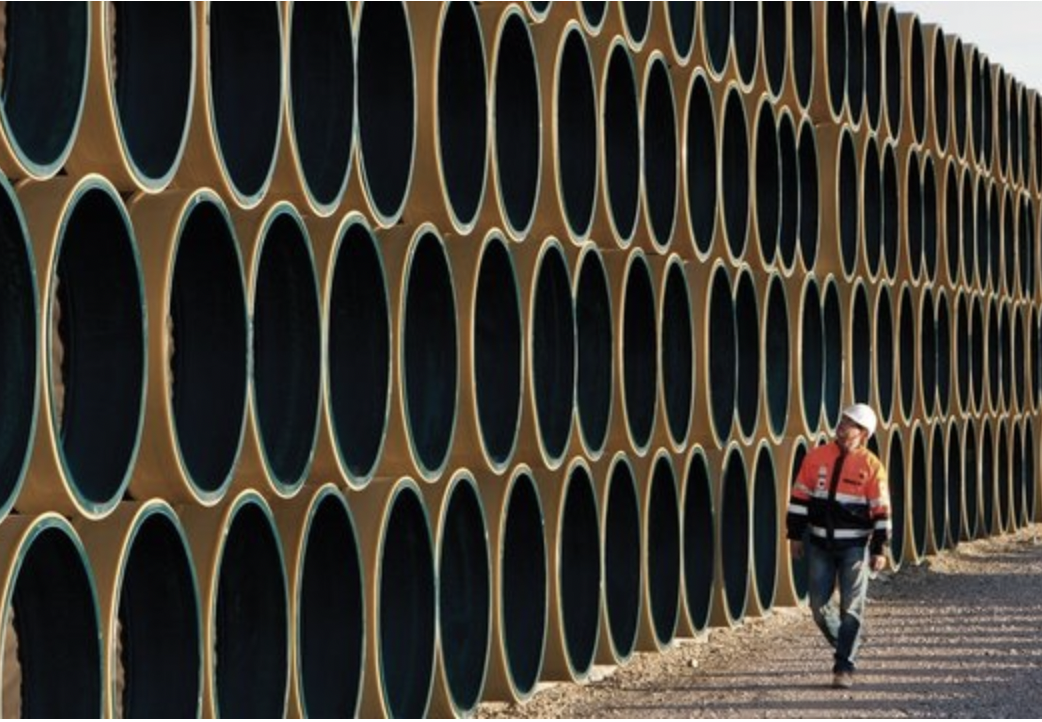 According to industry sources familiar with the matter, Munich Re and syndicates within the Lloyd’s of London market are among the major underwriters for Nord Stream 1, the pipeline bringing gas to Europe under the Baltic Sea.
According to industry sources familiar with the matter, Munich Re and syndicates within the Lloyd’s of London market are among the major underwriters for Nord Stream 1, the pipeline bringing gas to Europe under the Baltic Sea.













